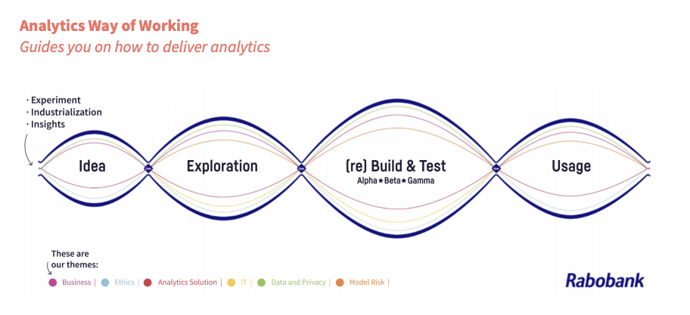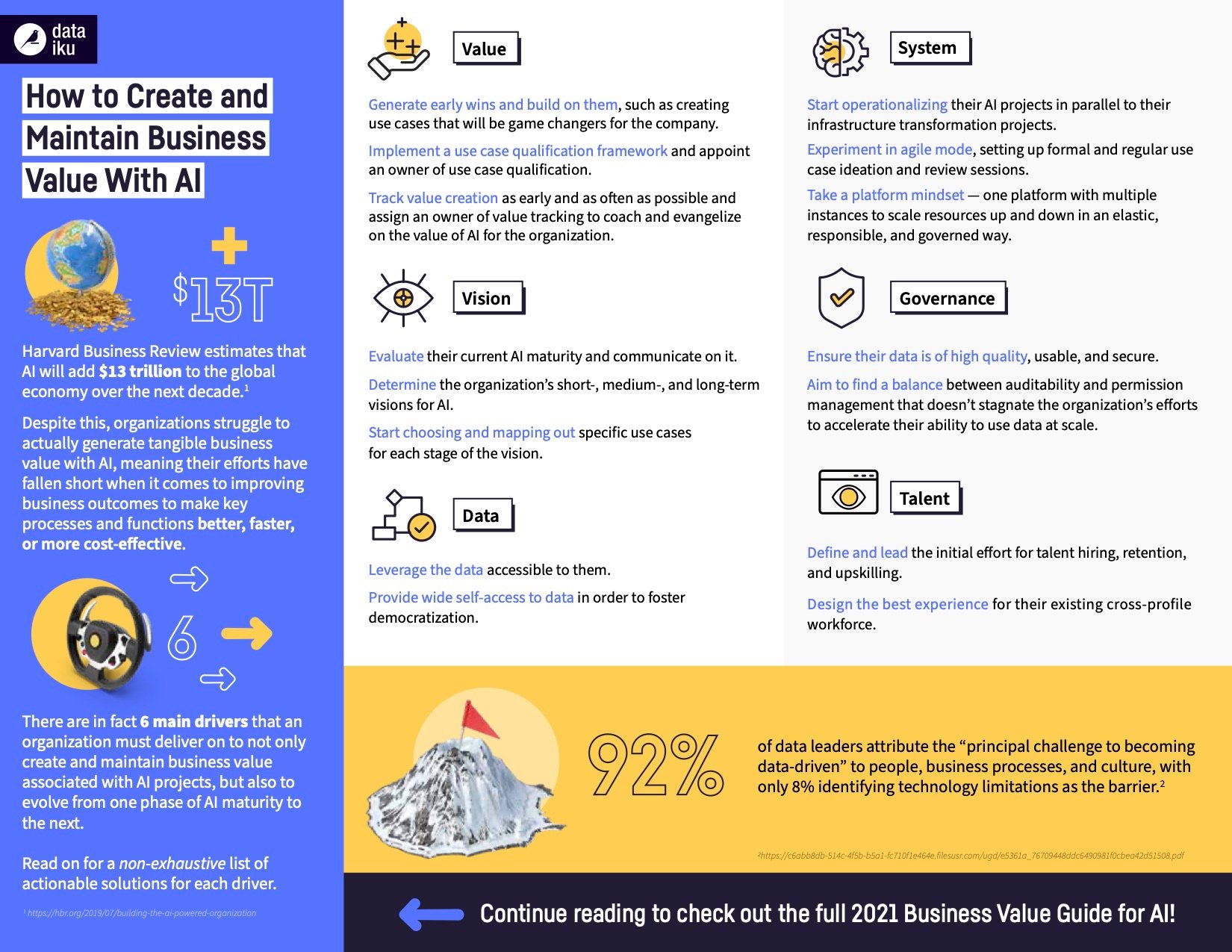To truly extract value from their data science, machine learning, and AI investments, organizations need to embed AI methodology into the core of not only their data strategy, but their holistic business model and processes. At Dataiku, we’ve developed six main drivers (outlined in the infographic below) that an organization must effectively deliver on to evolve their AI maturity.
However, creating, measuring, and maintaining business value associated with AI projects is easier said than done. Even if everyone at the organization agrees on how it should be done, the question is: where does this responsibility for actually tracking AI maturity and value lie?
Create an AI Value Team or Committee
One of the best ways to keep close tabs on business value from AI is to have a central team or committee devoted to this goal. Ideally, this team or committee would be responsible for:
- Implementing a use case qualification framework and appointing an owner of use case qualification (whether within the value team/committee or externally).
- Working alongside teams or people that are developing AI projects to track value creation as early and as often as possible.
- Evangelizing on the value of AI for the organization, including regularly sharing successes and reporting KPIs to management at least quarterly.
- Over time, developing the foundations to quantify value from AI beyond the value of each individual use case (e.g., value from reuse and capitalization across projects).
The last point is a critical one and is often where it’s especially helpful to have a dedicated AI value team or committee since much of the value beyond use cases tends to be cross-functional. For example, those dedicated to AI value efforts can help break down silos between and among IT, analytics teams, and business stakeholders as well as generate multi-persona collaboration across data projects. These initiatives tend to be more difficult to execute on when the effort is stemming from one specific line of business or team and not a more overarching group.
What It Looks Like in Practice
For a practical example of a use case qualification framework, a critical role of any AI value team or committee, look no further than Rabobank. Rabobank has been massively successful in their AI initiatives, completing more than 100 AI projects in the last year and a half and reducing time to onboard data team members — in particular data scientists — from months to weeks.
All data science, machine learning, and AI projects at Rabobank are based on the company's Analytics Way of Working, formerly known as their Innovation Funnel. As the use case moves along the process, it gets shaped further and further, but also it can be stopped at any one of the “gates” in the process if the use case doesn’t meet the defined standards.
 The Analytics Way of Working at Rabobank, which is the basis for all AI projects.
The Analytics Way of Working at Rabobank, which is the basis for all AI projects.
Because of limited bandwidth, selection of use cases can be highly competitive — generally use cases are selected based on the likelihood of passing the gates as well as the expected value in the context of required effort.
Critically, numbers and quantification of impact are required. Quantifications like “the process will be quicker” are not accepted. Clear return on investment (ROI) like “it will save three full-time employees per year in time” or other financial key performance indicators (KPIs) are the only path forward in the Innovation Funnel.
In addition to quantified ROI, use cases need — of course — a business owner, which isn’t a surprise based on how the Intelligence Lab operates. However, Rabobank goes one step further in that the real business owner needs to be quite high in terms of organizational hierarchy to ensure top-down support (though the day-to-day product owner can be lower in terms of hierarchy).
Whether an organization is just starting out on the mission to improve and accelerate its AI maturity or is determining how to scale a specific element such as governance or talent, developing an AI value team or committee can help ensure tangible ROI from AI stays front and center.







